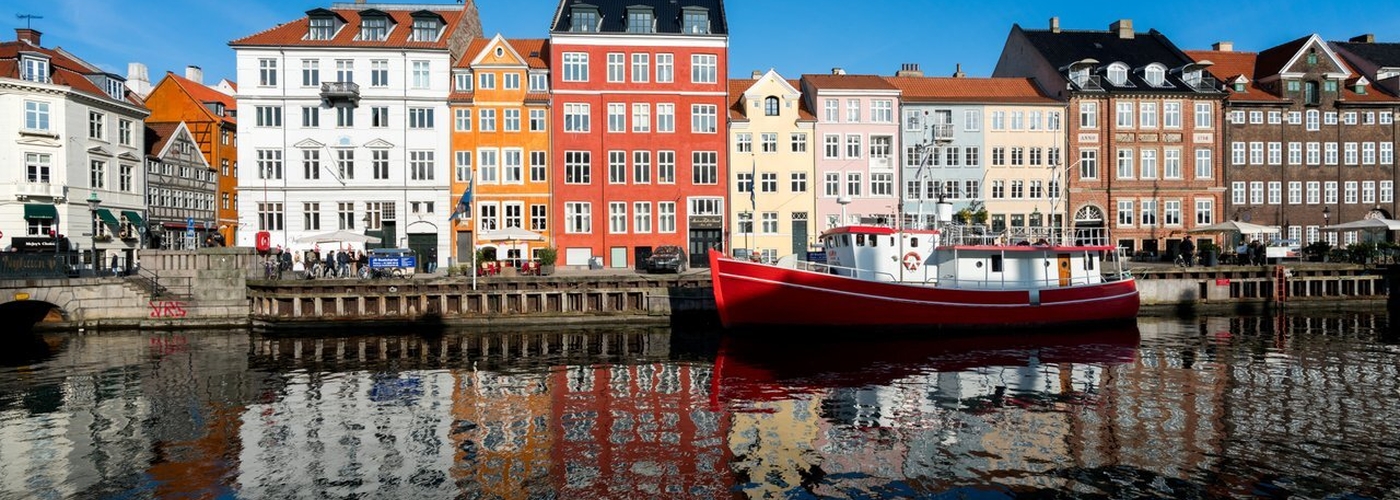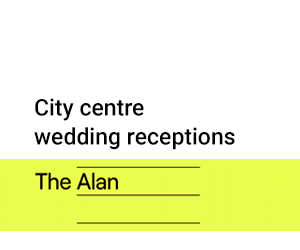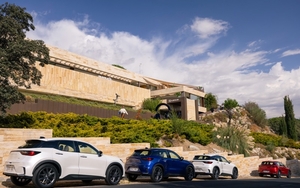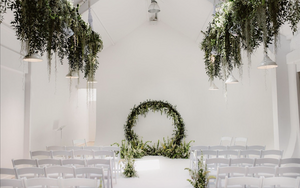Neil Sowerby rediscovers the delights of Denmark’s capital of cool
DEEP in the bowels of Kronborg Castle Holger Danske fixes me with his warrior glare. Legend has it the great hero, asleep for a thousand years, will awake to brandish his broadsword if his native Denmark is in peril. Whether Trump’s designs on the autonomous territory of Greenland come under that remit is debatable. For the moment Holger’s concrete statue (the 1907 plaster original crumbled in the damp) isn’t budging inside the tomblike warren of passages known as ‘casemates’.
Go early to enjoy the riot of street art and the heritage ‘hey, man’ vibe. Better still, stray across to the old city rampart, now a 2km narrow isthmus that offers a rural hippy idyll inside the city
I only stumbled down into the scary darkness because my calves didn’t fancy clambering up the Cannon Tower for views across the narrow Øresund Strait to Sweden or back into the old town of Helsingør.

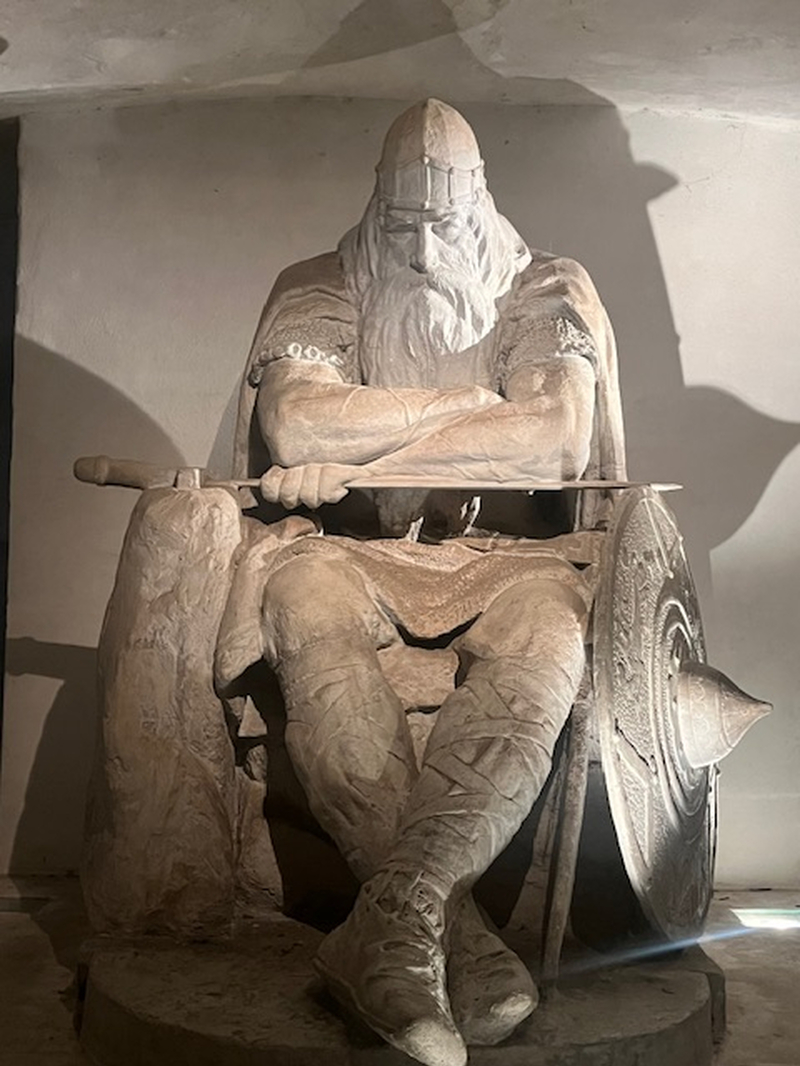
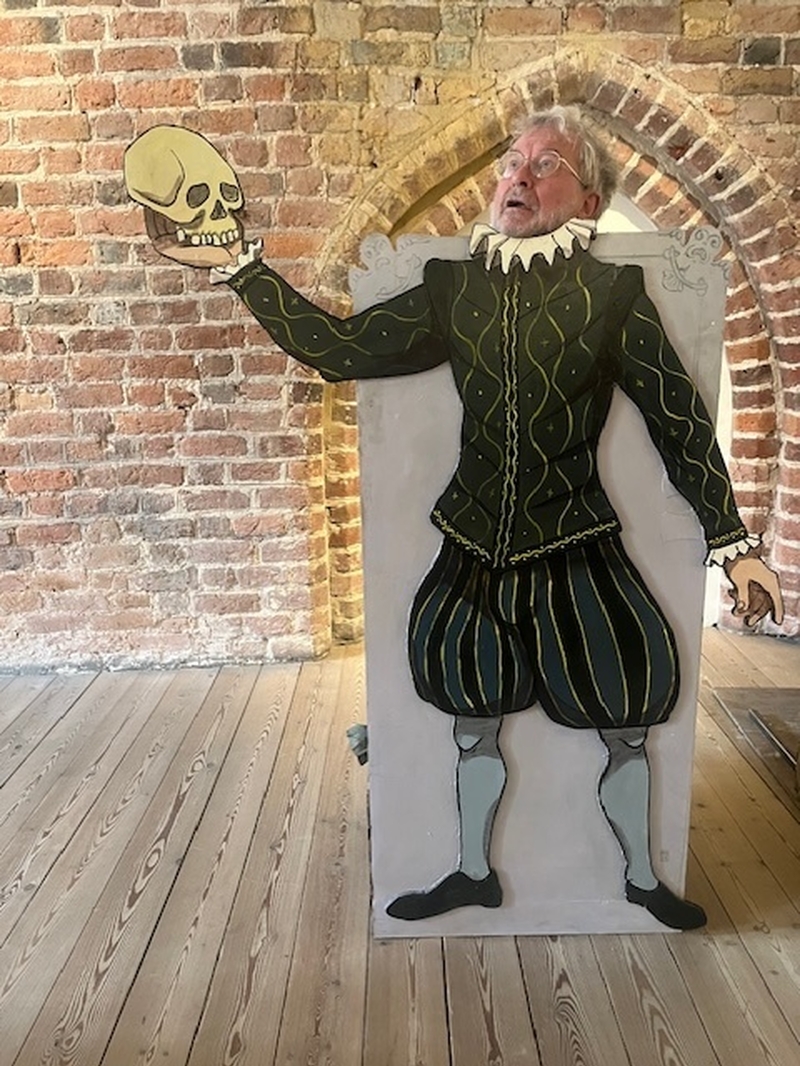
Prince Hamlet? It would be tragic not to visit his amazing castle
It was immortalised as Elsinore, the castle of Hamlet, by Shakespeare, who never visited. As one of the great fortified Renaissance palaces, for 25 years a UNESCO World Heritage Site, Kronborg is worth a visit in it own right, but our bardolatry definitely swung the hour train journey up from our weekend base – Copenhagen.
Regional rail travel is one of the benefits of the Copenhagen Card’s premium Discovery pass. That’s on top of access to 80 plus attractions.

En route north to Helsingør we stopped off at one of those, the globally acclaimed Louisiana Gallery, perched above the sea. Our reward – appropriately – a wide-voyaging exhibition called Ocean. That’s now closed but there’s still a wealth of riches. The collection of 4,000 post-1945 artworks, inside and in the grounds, can take a whole day to explore.
Not for us this time. Kronborg had detained us with its charming hygge, at odds with its monumental castellations. What wasn’t to like? Serious quill writing action, cut-out opportunities to pose, alas, as Hamlet clutching Yorick’s skull, crowned only by selfies in the throne room of Frederik and Sophie. The 16th century power couple’s extravagant court parties inspired Hamlet, apparently.

It all seemed a playful extension of laid-back Copenhagen, whose own magic seems to grow on me on each visit. It was boosted this time by our base, 25hours Paper Island, latest quirky offering from the 25-strong European hotel brand. There is an earlier 25hours in the city centre but the reclaimed dockland of Paper Island is handier for the contrasting iconic delights of the Freetown Christiania and the colourful tourist waterfront of Nyhavn.
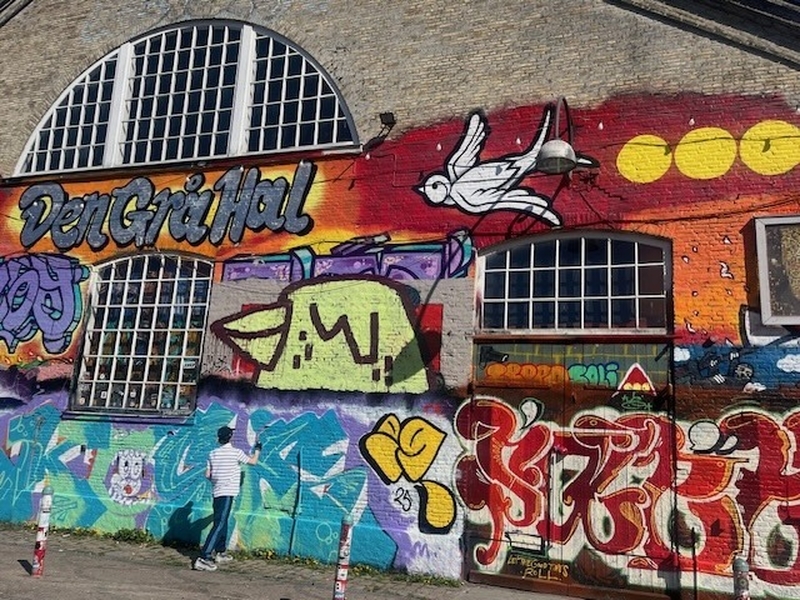
Christiania – hippy hangover’s hidden gems
A decade on from my last visit I was fascinated to see how Copenhagen’s homegrown counter-culture was getting on. It certainly feels less of a hassle nowadays. Much of he Pusher Street main drag has been dug up to deter hardcore drug dealers. Their presence had long been souring the hippie idyll created in 1971 when squatters and artists broke into an old military barracks and declared the 19 acre site a free town, independent of Danish government laws and regulations. It remains a contender for street art capital of Europe.
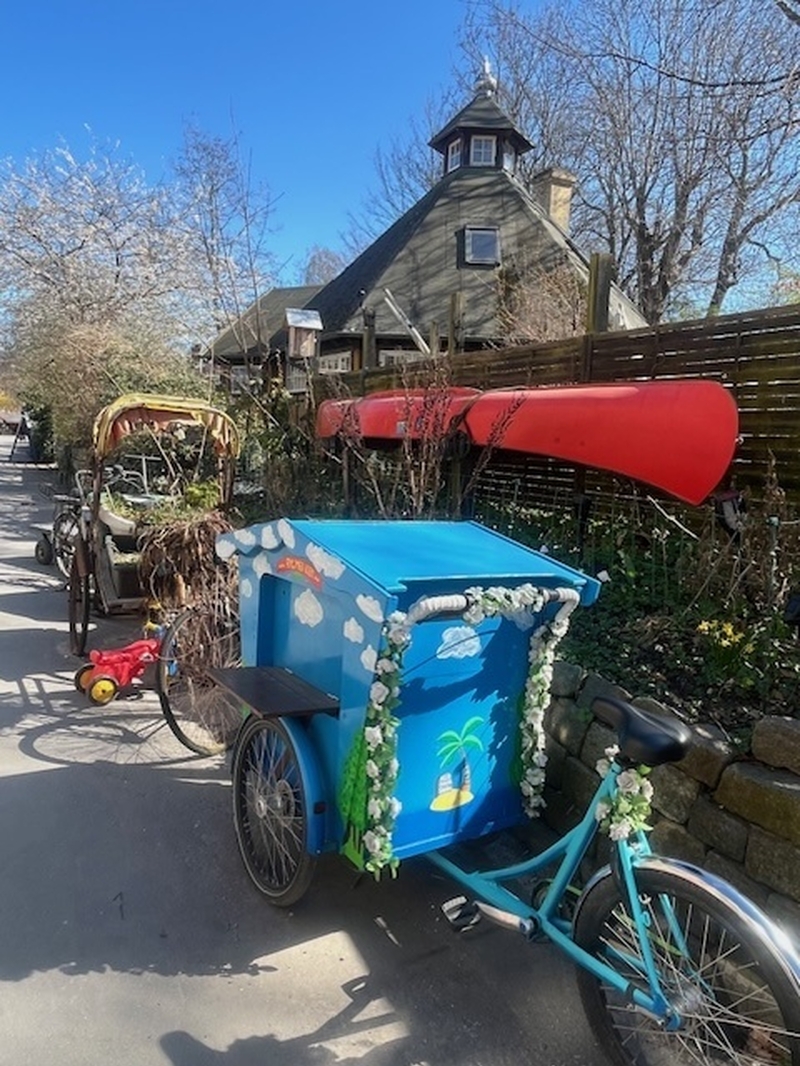
Concessions still give it a remarkable ramshackle independence. Selling cannabis is illegal but the scent of weed is everywhere. We kept to CBD fave hemp, a key constituent in the fine beers produced by the onsite Christiania Bryghus. It was a quiet refuge from the weekend tourist packs and the ‘bohemian’ tat on sale for them. Go early to enjoy the riot of street art and the heritage ‘hey, man’ vibe. Better still, as we did, stray across to Dyssen, the old city rampart, now a 2km narrow isthmus that offers a rural hippy idyll inside the city.

Our spring walk offered a riot of blossom and a parade of proudly weird houses by reed-fringed inlets, all in the shadow of Copenhill’s iconic waste burning plant. Besides its chimney belching steam, this is also home to a 450m green roof ski slope and the world’s tallest (85m) climbing wall.
As hippies for the afternoon we gave all that a miss, turning back towards Paper Island at the Noma farm. This is now the HQ of the one time ‘World’s Greatest Restaurant’, still serving benchmark Nordic cuisine but increasingly concentrating on the growing and product side of the groundbreaking project. As we peered at the greenhouse complex a slightly weary team member was crushing millions of mussels for fertiliser. It’s not all gastro glamour.

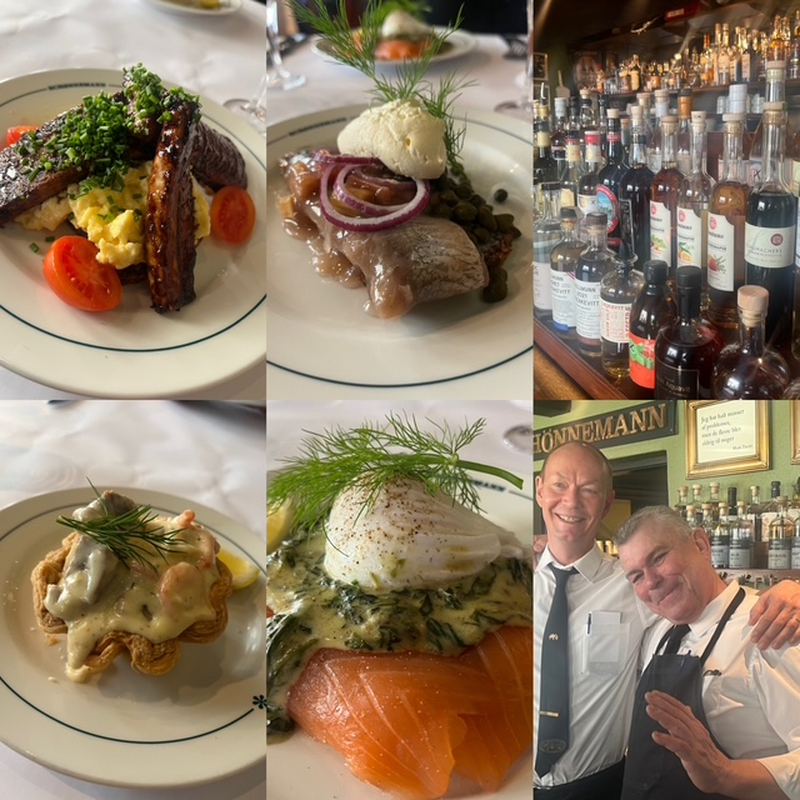
Smørrebrød central – book well in advance
At Schønnemann they’ve been filling Copenhageners’ bellies with Smørrebrød for nigh on 150 years and aren’t going to change their ways anytime soon. When we got there the first lunchtime ’shift’’ had finished at 2.15pm and we had to stand outside until their folksy dining rooms reopened at 2.30pm. Worth it? Definitely a cut way above the myriad other joints serving fishy toppings on rye bread. And no rival was going to match their 160-strong schnapps roster or the unstuffy quality of service. Highly recommended… for the likes of herring marinated in akavit with rhubabrb and stout-glazed smoked eel.
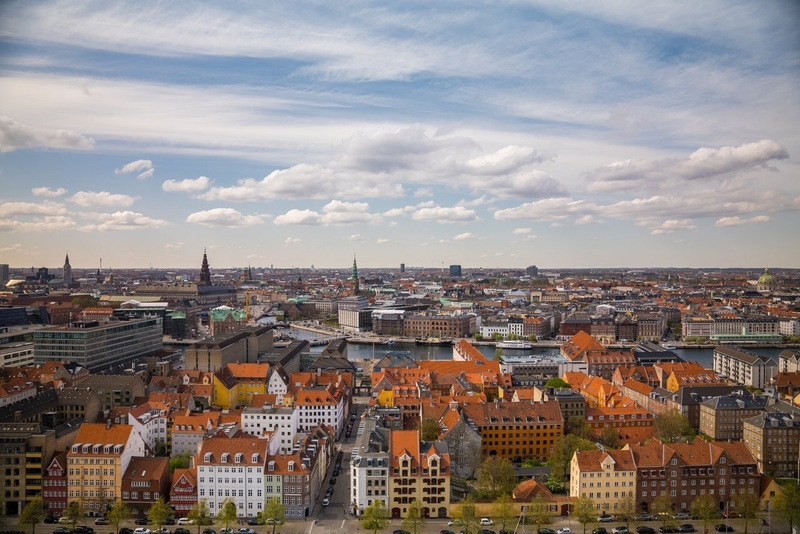
No wonder it’s a favourite of Noma head honcho Rene Redzepi. Just around the corner is a more recent culinary institution – DØP, the 100 per cent organic hot dog cart. Grab one before making the ascent of the adjacent city landmark, the Rundetårn (the 34.8m high red brick Round Tower). There are no steps, just a spiralling slope, which Russian Tsar Peter the Great rode up on horseback. At the top you’ll find the tower’s 1642 raison d’etre, Europe’s oldest working observatory.
Over in the Amsterdam-like Christianshavn district there’sd an even better view of the city from the Vor Frelser’s Kirke. To climb this Baroque church’s 95m high spire it’s best to book online. Vertigo spoiler alert: the last 150 steps of the 398 are on the outside.


Copenhagen beer (and we don’t mean ‘possibly the best lager in the world’)
After 38 years employing that vainglorious slogan Carlsberg abandoned it. Alongside its international profile the brewery retains its command of the Danish market, offering tours and tastings at its historic brewing complex. I wouldn’t bother. The city offers more exciting craft options from the famous likes of Mikkeller. My personal bar recommendations would be Fermentorum (in hip Vesterbro’s Meatpacking District) and BRUS (in edgier, more diverse Nørrebro).
Fermentorum is a cosy, candlelit basement with a large range of beers, including some familiar English indie brands. No food, but for ballast around the corner there’s the original branch of Hija de Sanchez, offering taco combos. Tiny and authentic. (There’s also a branch in the Torvehallerne, Copenhagen’s best food market, up in Nørreport.)


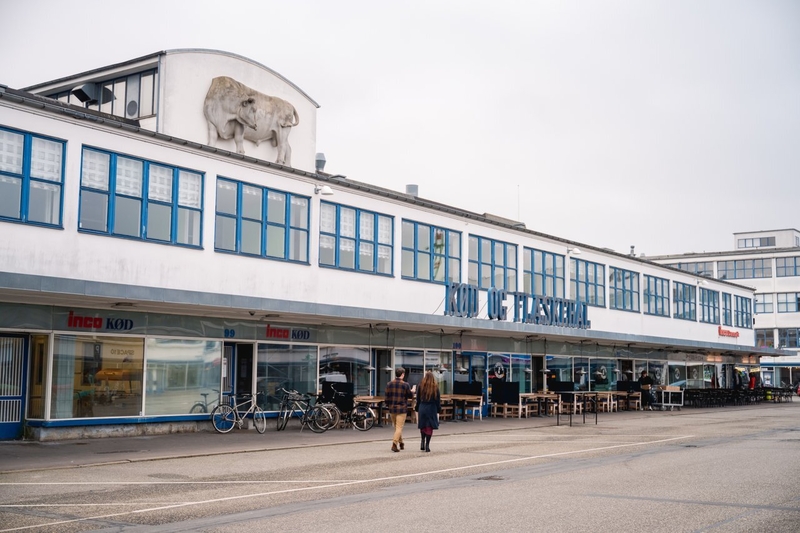
The rest of Vesterbro’s reclaimed industrial district dances to a heavier tune – BBQ and Mikkeller beer at the giant WarPigs, fish specials at the mega minimalist Kødbyens Fiskebar. For a more philosophical beer experience catch the Metro’s circle line to leftfield Nørrebro and BRUS, sleek taproom for Denmark’s finest brewers, To Øl. But first, before working your way through the huge range of their innovative beers, seek out the grave of the great Danish philosopher Søren Kierkegaard in the atmospheric Assistens Cemetery, picking up a shawarma from one of the many Middle Eastern restaurants across the road.
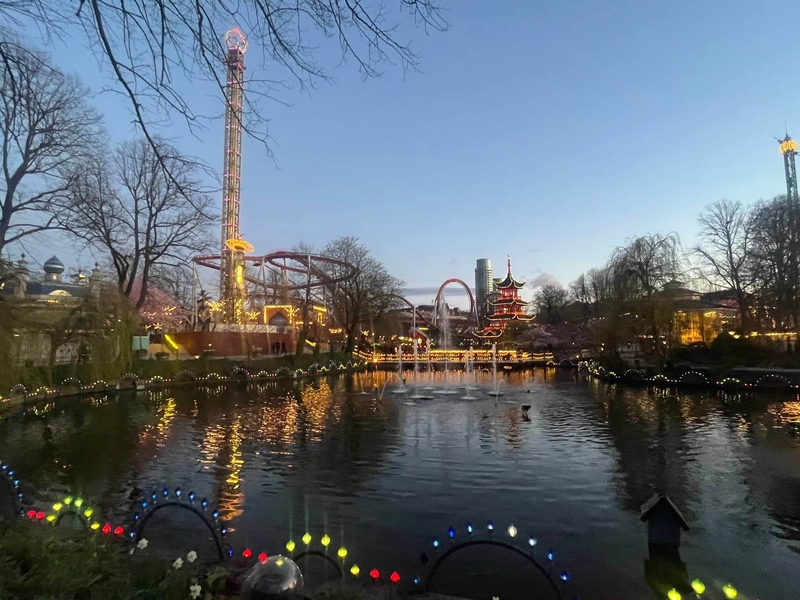

The Demon of Twinkling Tivoli and Iron Age Hulderose Woman
A ten minute walk apart, my favourite Copenhagen attractions – the world’s second oldest amusement park, inspiration for Disneyland allegedly, and one of Europe’s most captivating museums. The family-friendly eight hectares of the Tivoli Gardens are packed with stomach-churning rides, including the loop the loops of the Dæmonen (The Demon) and the century-old wooden rollercoaster, the Rutschebanen. Created in 1843, the wooded park is also prettier than its rivals, especially at dusk as the lights come into their own.
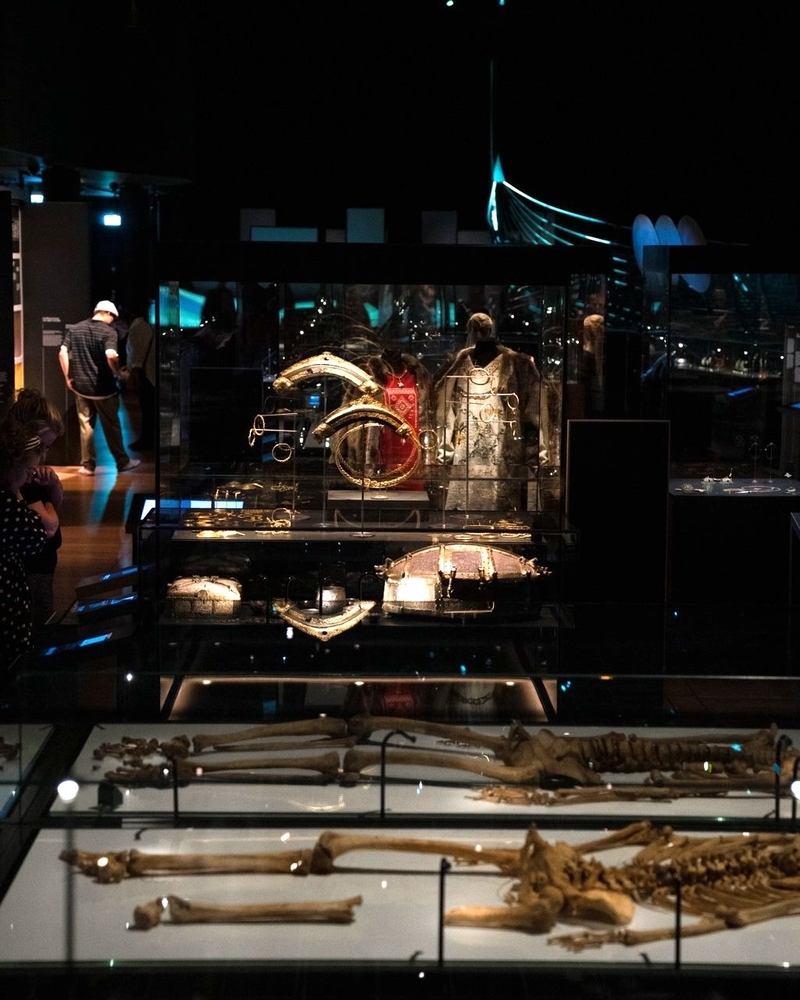

I wouldn’t like to be trapped after dark in the Nationalmuseet. Denmark's National Museum. set in a former palace, houses some remarkable Viking treasures, including the Tissø Ring, a 10th-century golden ornamental ring found during ploughing near the lake of that name. But a grimmer past is also on display, in particular the preserved bog bodies Jutland is famous for. Nothing quite as haunting as Grauballe Man I saw during a trip to second city Aarhus, but Hulderose Woman pushes him close.

This Iron Age female, her elaborate clothing intact, was recovered from a peat bog in 1879. The leathery body was found with the legs bent behind the back, and a nearly severed right arm. It is thought that the arm was damaged before she died. She may have been strangled or hanged.

Equally macabre – and certainly not for the squeamish – are the displays at the city’s Medicinsk Museion (Medical Museum). In the basement there’s a very topical exhibition, Mind The Gut, exploring the complex relationship between brain and bowels.
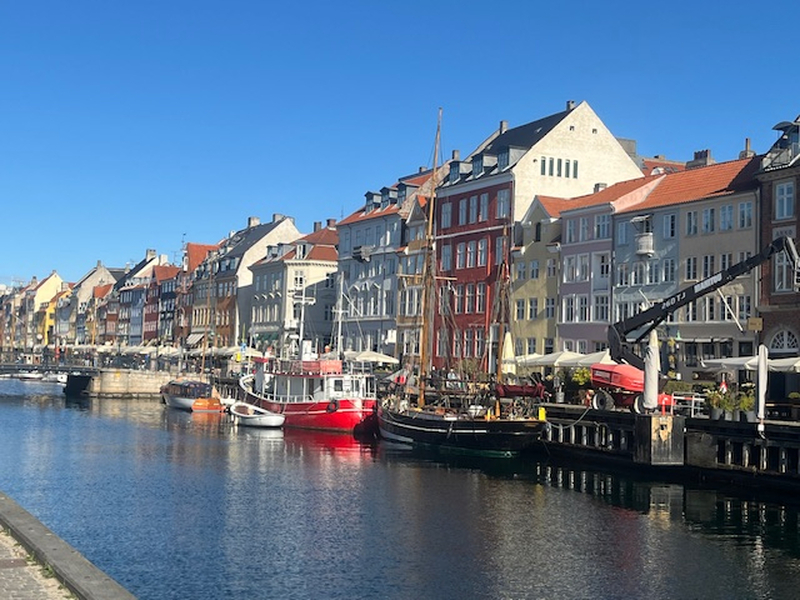
25hours on Paper Island – where it’s all happening
For over 300 years Paper Island was home to naval shipyards, an arsenal and warehouses for coal and paper (hence its name). A short walk away, but a world apart from the colourful quays of 17th century Nyhavn, where Hans Christian Andersen lived and wrote many of his fairy tales. Today that is a tourist honeytrap, not unpleasantly so, but the rapidly transforming Paper Island offers a cooler vibe. All this makes the new 25hours hotel a perfect place to stay.
En route across the canal from Nyhavn and the island there are three good refuelling spots – for street snacks Broens Food Court, upmarket Barr’s homage to North Sea traditions (go for the sourdough pancakes with caviar) and POPL, an elevated burger joint/takeaway, run by ex-Noma alumni. In 25hours Paper Island itself check out TigerLily, an elegant Asian fusion restaurant full of surprise twists.




The hotel’s creators claim the 128 rooms replicate the ambience of a quintessentially Danish summer home. Our shipshape sixth floor corner suite had a nautical feel to it. From its its window seats we gazed out on a maze of waterways and dynamic new architectural developments, not least the remarkable Royal Danish Opera House and its plant-packed urban garden. Its opening 20 years ago kickstarted the regeneration of the docklands. We only truly appreciated its limestone grandeur (seating 1,400, only nine of its 14 storeys are above ground) from a boat tour of the harbour.


Farewell, Little Mermaid, we hardly knew you
We saved that, one of the best Copenhagen Card treats until the end of our break. Stromma’s hour-long Classic Canal Tour (commentary in English) was a splendid way of consolidating our overview of the city from a different angle.
Chugging past the Langelinie promenade our wry guide poked fun at the underwhelming bronze sculpture of the Little Mermaid. Since the Sixties this homage to the Hans Christian Andersen heroine has been serially defaced, even decapitated in one assault. It was erected in 1913 as a symbol of the city. Andersen had created the Mermaid in 1837, a decade before another of his fairytales first linked Holger Danske to Kronenborg. Surely our hero should have arisen to rescue the fish-tailed maid? If not from criminal damage, surely from the 2023 movie remake?
Fact file
Neil stayed a 25hours Paper Island, Papiroen 25, DK-1436 Kobenhavn K, Doubles from £157, room only.
It is the second of their hotels in the city following the more central 25hours Indre By.
Copenhagen Card https://copenhagencard.com/view/whats-included
It comes in two versions, the HOP and Discover card, the first offering access to 40+ attractions, the second to 80+ with in addition much wider transport options (which allowed us to use the regional rail service up to Helsingør) 24 hours to 120 hours (Discover only).
For full tourism information go to visitcopenhagen.com
He flew to Copenhagen from Manchester with Ryanair.





